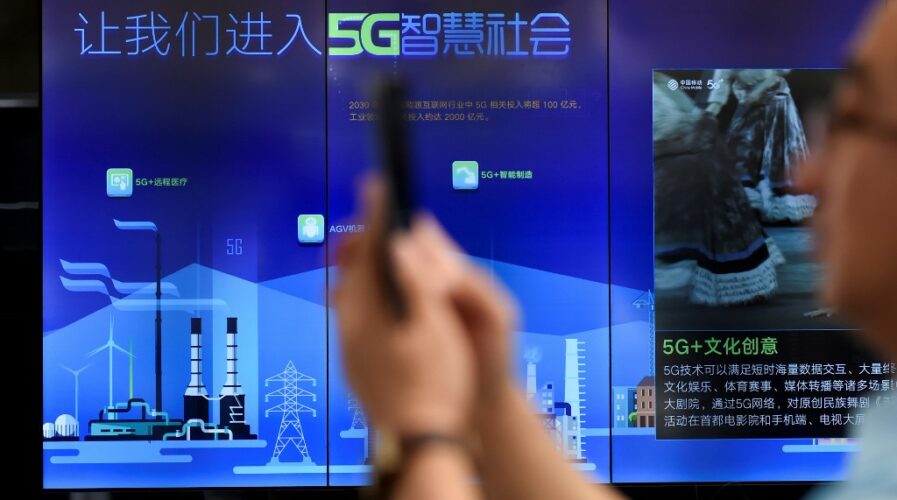
Industries across the APAC are taking a conservative approach when it comes to embracing 5G technology, says new research. Source: AFP
APAC industry takes a cautious stance on 5G
- Most industries across the APAC region are taking a conservative approach when it comes to embracing 5G technology, according to new research
Different industries will likely see the advantages that 5G connectivity will bring well ahead of individual users, as its extremely high speed, low latency benefits will well complement many sectors. Consumers will likely have to wait three years before the benefits of commercial 5G networks start to outstrip 4G LTE in terms of performance.
But here in the Asia Pacific (APAC) region, it appears that most industries would rather take a “wait and see” approach in adopting 5G technologies, according to a recent report from Frost & Sullivan’s Information & Communications Technology (ICT) team.
The 5G Strategic Direction Voice of Customer, Asia-Pacific, 2020 survey intends to gain quantitative insights and a top-level assessment of the general sentiments toward the adoption of 5G in industry. The study also attempts to identify a viable framework to expedite deployment and scalability of 5G tech.
With the exceptions of the telecommunications sector, the media and entertainment industry, and the governance and public sectors, all other vertical industries surveyed in APAC are taking a more conservative approach towards 5G in their business.
“Even though the telecoms industry is pushing for early 5G deployment, the end-user segments are not as keen,” says Mei Lee Quah, the information and communication technologies associate director at Frost & Sullivan.
Eighty-eight percent of respondents made clear that they intend to implement 5G in APAC at some point, while 74% of respondents said they understand the impact of 5G and the clear need for it. Of those respondents, 32% stated that incorporating 5G in government policies and public sector projects was the most critical enabler.
“For the industry ecosystem to develop, it is necessary to discuss how to bring 5G to the next level. Possible regional drivers include new applications that can be monetized, solving pain points for consumers and inclusion of 5G in government policies and public sector projects,” Quah said.
The consensus seems to be that there is a knowledge gap when it comes to understanding the need for 5G connectivity. The push for 5G into APAC industry is not so urgent right now because not all see the need for it yet, and there are still issues to be addressed in terms of 5G rollout into markets, and supply and demand gaps because some sectors are either pulling back due to the pandemic or do not see a need for an immediate shift to adapting 5G applications.
Certain countries exhibited higher levels of grasping 5G’s impact, such as the Philippines and South Korea, with 90% and 100% 5G understanding, respectively. Malaysia, Indonesia, Singapore, and Japan showed below-average levels of 67%.
Some 49% of survey respondents shared that 5G solutions will require connectivity across multiple cities within the same country, with global connectivity as a secondary requirement — 35% of respondents said new applications that can be monetized are the most critical enabler of 5G.
READ MORE
- The criticality of endpoint management in cybersecurity and operations
- Ethical AI: The renewed importance of safeguarding data and customer privacy in Generative AI applications
- How Japan balances AI-driven opportunities with cybersecurity needs
- Deploying SASE: Benchmarking your approach
- Insurance everywhere all at once: the digital transformation of the APAC insurance industry


